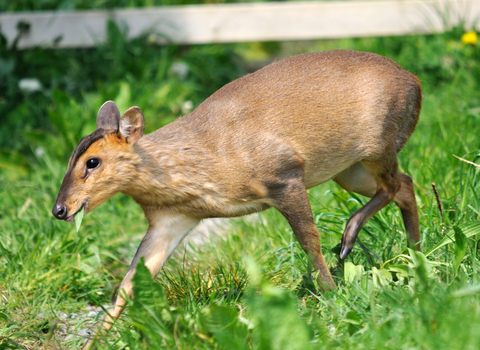
©Amy Lewis
Muntjac deer
The muntjac deer was introduced into the UK from China in the 20th century. It has gained a stronghold in southeast England, where it can cause damage to our woods through browsing.
Scientific name
Muntiacus reevesiWhen to see
January to DecemberSpecies information
Category
Statistics
Length: 77-91cmShoulder height: 45-52cm
Weight: 10-17kg
Average lifespan: 10-13 years
Invasive, non-native species. Protected in the UK under the Deer Act 1991.
About
The small, Chinese muntjac deer was introduced to Woburn Park in Bedfordshire at the start of the 20th century and rapidly spread into the surrounding area. It is now a common animal across southeast England and can be found in woodland, parkland and even gardens. Muntjac deer are notorious browsers, eating the shoots from shrubs, as well as woodland herbs and brambles. This clearing of woodland understory has been linked to declines in species such as nightingales.Male muntjacs have short, unbranched antlers that slope backwards, and a pair of long canine teeth. They breed all year-round, but females usually only have one kid at a time. Muntjac deer are also known as 'barking deer' because of their dog-like calls.
